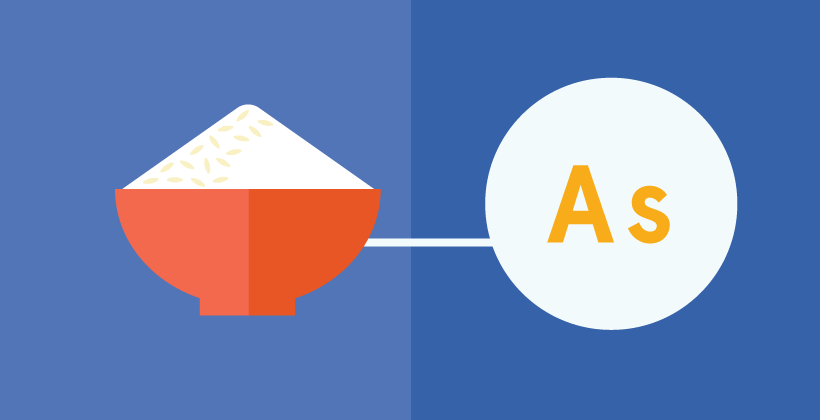Aluminium in Food (Q&A): sources, safety and regulations
Last Updated : 01 December 2021What is aluminium?
Aluminium is a metal, such as iron, tin and copper. It is the most abundant metal in the earth’s crust and makes up about 8% of the weight of the earth’s surface.
Where can aluminium be found?
Aluminium is present naturally in nearly all rocks and soils. It can also be found in water, air and the human body. Aluminium naturally found in the soil and water can be absorbed by vegetation.
What are the sources of aluminium in the diet?
Aluminium in the diet can come from a number of different natural and synthetic sources. It is naturally taken up by certain plants and foods as they grow, including tea leaves, cocoa, spices and some herbs, cereals and cereal based foods (e.g. bread, rice, cakes, biscuits and pastries), some vegetables (e.g. mushrooms, spinach, radish and lettuce), and dairy and soya products (including infant formula). Drinking water is a minor source of exposure.
Food additives and food colours are another contributor to the dietary intake of aluminium. Aluminium-containing food additives are added to food products to improve their texture and taste (e.g. in external coatings of fine bakery wares, as anti-caking agents in dried powdered foods and drinks). Water-soluble food colours are precipitated with an aluminium salt to form water-insoluble pigments called aluminium lakes. These water insoluble colours have advantages for use in food products containing fats and oils; for example, they provide better dispersion, broader spectra and more brilliant colour and higher light and heat stability than other types of colours. It should be noted that like all food additives, aluminium-containing food additives must have a demonstrated useful purpose and as part of their approval must undergo a rigorous scientific safety evaluation. Approved additives can only be added to particular foods following their approval and at an allowed use level.
The use of cookware and packaging materials that contain aluminium (e.g. aluminium foil and cartons) can also result in the transfer of small amounts of aluminium into food products.
Is it safe to eat foods containing aluminium?
Many studies have been carried out to identify the effect of aluminium on human health. In recent years, there have been concerns that chronic aluminium exposure may be related to Alzheimer’s disease. EFSA carried out a safety evaluation in 2008 and, based on the available data, did not consider exposure to aluminium via food to constitute a risk for developing Alzheimer’s disease.
Aluminium is present in a range of everyday foods and drinks, many of which are important components of a healthy diet (e.g. vegetables, cereals and dairy products). It is thought that the levels of aluminium present in the body remains low, controlled by low absorption from the intestinal tract and efficient removal in urine via the kidneys. Therefore, dietary aluminium is not a source of concern in people with normal kidney function.
Are there any regulations concerning the levels of aluminium in foods?
Based on the combined evidence from several studies, EFSA has recommended a tolerable weekly intake (TWI) of 1 mg aluminium/kg body weight/week. More recently, in 2011, the Joint FAO/WHO Expert Committee on Food Additives (JECFA) reviewed new scientific evidence which increased their confidence in the risk assessment. This allowed the panel of WHO experts to establish an increased Provisional Tolerable Weekly Intake (PTWI) of 2 mg/kg bw, which means they considered the evidence to show it is safe for people to consume up to this level without an appreciable risk to their heath.
Are there regulations concerning the use of aluminium during food processing?
The European Framework Regulation (EC) No. 1935/2004 on Materials and Articles Intended to come into Contact with Foodstuffs outlines the general safe use of metals when used with food products. It specifies that any materials and articles shall be manufactured in compliance with good manufacturing practice so that they do not transfer their constituents (such as aluminium) to food in quantities which could endanger human health.
Since 2012, regulations have been put in place to adjust the conditions of use and reduce the approved use levels for aluminium-containing food additives, to ensure that the EFSA’s TWI is not exceeded by European consumers.
For more information:
- European Food Safety Authority (2008) Safety of aluminium from dietary intake - Scientific Opinion of the Panel on Food Additives, Flavourings, Processing Aids and Food Contact Materials (AFC). EFSA Journal 6(7):754.
- European Food Safety Authority (2013) Dietary exposure to aluminium-containing food additives. EFSA Journal. 10(4):411E.
- European Commission (2014) Commission Regulation (EU) No 923/2014 of 25 August 2014 amending Annex II to Regulation (EC) No 1333/2008 of the European Parliament and of the Council as regards the use of aluminium lakes of riboflavins (E 101) and cochineal, carminic acid, carmines (E 120) in certain food categories and Annex to Regulation (EU) No 231/2012 as regards the specifications for riboflavins (E 101).
- European Commission (2012) Commission Regulation (EU) No 380/2012 of 3 May 2012 amending Annex II to Regulation (EC) No 1333/2008 of the European Parliament and of the Council as regards the conditions of use and the use levels for aluminium-containing food additives
- European Commission. (2004) Regulation (EC) No 1935/2004 of the European Parliament and of the Council of 27 October 2004 on materials and articles intended to come into contact with food and repealing Directives 80/590/EEC and 89/109/EEC


